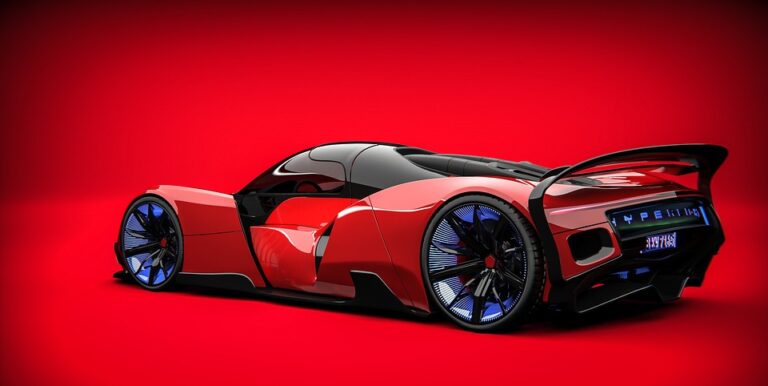Automotive Aesthetics: The Visual Language of Concept Cars
Meta Description: Explore the captivating world of concept cars and their revolutionary visual language, showcasing automotive aesthetics that shape the future of design.
Introduction
Concept cars embody the intersection of art and engineering, serving as a canvas for car manufacturers to showcase their most innovative ideas. These vehicles do more than just draw attention; they communicate brand values, technological aspirations, and the future of mobility. The visual language of concept cars is a powerful tool, bridging the gap between automotive design and consumer perception. In this article, we delve into the essential aspects of automotive aesthetics that characterize concept cars, their influence on the industry, and what they reveal about the future of auto design.
What Defines the Visual Language of Concept Cars?
The Importance of Aesthetics in Automotive Design
Automotive aesthetics play a crucial role in shaping a car’s identity. Concept cars often emphasize unique design elements to create a visual impact that reflects innovation and foresight. Key aspects include:
- Shape and Form: Aerodynamic lines and dynamic shapes often signify speed and efficiency.
- Color Palette: Bold colors can evoke emotions, while muted tones may convey sophistication.
- Materials: The choice of materials, whether luxurious or sustainable, speaks volumes about a brand’s commitment to quality and environmental consciousness.
These elements combine to form a visual narrative that entices potential customers and shapes public perception of the automotive brand.
Design Philosophy Behind Concept Cars
The design philosophy behind concept cars often involves several core principles:
- Functionality Meets Form: Car manufacturers aim to find a balance between aesthetic appeal and practical usability.
- Emphasis on Innovation: Concept cars often feature forward-thinking technology, embracing futuristic displays and in-car connectivity that enhances user experience.
- Brand Identity: Each concept car is a reflection of the brand’s ethos, adhering to its stylistic guidelines while pushing the boundaries of design.
By combining these principles, manufacturers craft vehicles that not only look impressive but also encapsulate their envisioned direction for the future.
Notable Examples of Automotive Aesthetics in Concept Cars
Tesla Roadster: The Future of Electric Performance
Tesla’s 2020 Roadster concept car encapsulates automotive aesthetics through its sleek form and elegant finishes. With its aerodynamic silhouette and futuristic interiors, it emphasizes both performance and sustainability. The focus on minimalistic design not only enhances its visual appeal but also aligns with contemporary consumer preferences for simplicity and tech-savviness.
Mercedes-Benz Vision AVTR: Nature-Inspired Design
The Vision AVTR concept car redefines automotive aesthetics with a design inspired by nature and biomimicry. Its flowing lines and organic shapes mimic the contours found in nature, making it a bold statement on sustainability and innovation. The use of recycled materials and an emphasis on harmony between technology and nature highlights a growing trend in automotive design aimed at ecological awareness.
Nissan Ariya: Emphasis on Connectivity
The Nissan Ariya showcases a seamless blend of aesthetics and technology, featuring a sleek, modern design that integrates digital interfaces smoothly into the user experience. The exterior’s sharp lines and LED lighting give the vehicle an innovative look, while inside, the spaciousness and connectivity reflect the evolving needs of consumers looking for more than just transportation.
The Impact of Concept Cars on the Automotive Industry
Setting Trends and Standards
Concept cars serve as trendsetters in the automotive industry, often influencing the subsequent designs of production models. They showcase cutting-edge technologies and unique styling elements that can redefine market expectations and consumer desires. By unveiling these eye-catching vehicles at major auto shows, manufacturers can gauge public reaction and tailor their future offerings accordingly.
Fostering Sustainability
In recent years, the focus on sustainability has trickled down from concept cars to mass-produced vehicles. Many concept cars emphasize electric drivetrains, eco-friendly materials, and innovative energy solutions, prompting traditional manufacturers to shift their practices toward greener alternatives. The commitment to sustainable design is not just a trend but a necessary evolution in response to growing environmental concerns.
The Future of Automotive Aesthetics
As the automotive industry evolves, so too does the visual language of concept cars. The integration of artificial intelligence, augmented reality, and enhanced connectivity is set to revolutionize design principles, opening new avenues for creativity. Future concept cars will likely push the boundaries of traditional norms, embracing not just aesthetics but also adaptability and interactivity in design.
Conclusion
The world of concept cars is a vibrant testament to the power of visual language in automotive aesthetics. These vehicles capture our imagination while paving the way for the future of transportation. As manufacturers continue to innovate and embrace sustainable practices, the landscape of automotive design will change, blending artistry with functionality. For enthusiasts and consumers alike, these milestones in design hint at a thrilling journey ahead, transforming the way we perceive and interact with the automobiles of tomorrow.
Call to Action
Stay tuned to buzzo.live for more updates and insights into the latest automotive design trends. Dive into our other articles to discover how the industry is shaping the future of mobility!


